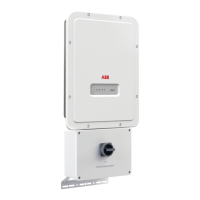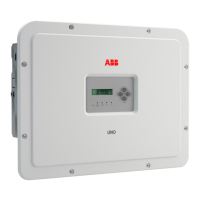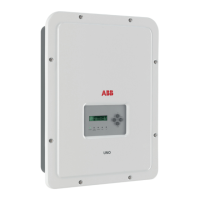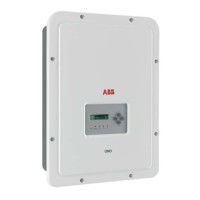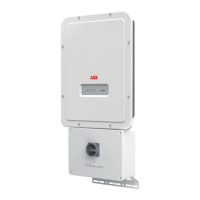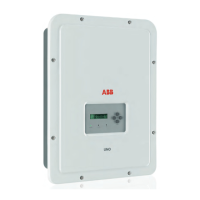Preliminary operations for connection of the PV generator
Checking the correct polarity of the strings
Using a voltmeter, check that the voltage of each string has the correct
polarity and falls within the input voltage limits of the inverter (see techni-
cal data).
Polarity inversion can cause serious damage.
If the open circuit voltage of the string is near the maximum value ac-
cepted by the inverter, consider that low ambient temperatures cause
an increase in the string voltage (different according to the photovoltaic
module used). In this case it is necessary to carry out a check of the
sizing of the system and/or a check on the connections of the modules
of the system (e.g.: number of modules in series higher than the design
number).
A conguration program that can help to correctly size the photovoltaic system is available on
the ABB website http://stringsizer.abb.com.
Checking of leakage to ground of the photovoltaic generator
Measure the voltage present between the positive and negative pole of
each string with respect to ground, as described in the section on "Veri-
cation of leakage to ground".
Do not connect the strings if a leakage to ground has been detected, as the inverter might
not connect to the grid.
Selection of differential protection downstream of the inverter
All ABB string inverters marketed in Europe are equipped with a device
for protection against ground faults in accordance with the safety stan-
dard IEC 62109-2, sections 4.8.2 and 4.8.3 of the Standard (equivalent
to Standard DIN V VDE V 0126-1:2006, section 4.7). In particular, ABB
inverters are equipped with a redundancy on the reading of the ground
leakage current sensitive to all components of both direct and alternating
current. Measurement of the ground leakage current is carried out at
the same time and independently by 2 different processors: it is suf-
cient for one of the two to detect an anomaly to trip the protection, with
consequent disconnection from the grid and stopping of the conversion
process.
There is an absolute threshold of 300 mA of total leakage current AC+DC
with protection tripping time at a max. of 300 msec.
In addition, there are another three tripping levels with thresholds re-
spectively at 30 mA/sec, 60 mA/sec and 150 mA/sec to cover the “rapid”
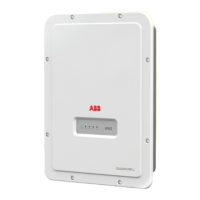
